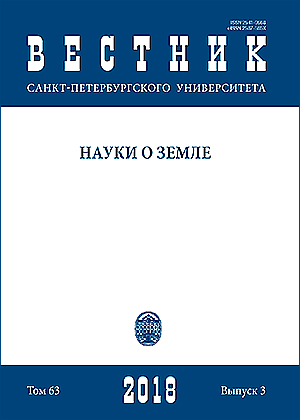Use of bioindication and biotesting methods in assessing the ecological state of the territory of gas condensate deposits in the north of Western Siberia
DOI:
https://doi.org/10.21638/spbu07.2018.305Abstract
During environmental monitoring in the territory of licensed areas of the north of Western Siberia (YNAO), substances-indicators of pollution of the environment by drilling waste were identified. It has been established that the discharge significance of phenol, chlorides, Na+ and Ba2+ is most pronounced when discharging stratal waters. In the drill cuttings, the high level of chloride, petroleum hydrocarbon, Cu, Sr and Ba concentration was noted. To assess the ecological state of the natural environment in the gas condensate fields, a set of bioindication methods including determination of the chemical composition of soils and plants and biotesting of water extracts of soils using the Chlorella vulgaris and Daphnia magna test objects was applied. The content of heavy metals Zn, Cd, Cu, Sr, Fe, Mn, Cr, Pb, Ba, Co, and Ni is determined in 8 plant species. Indicators of early trends in the transformation of ecosystems under the influence of anthropogenic load have been identified. There are Ledum decumbens and Cladonia stellaris. The convergence of the results of methods of biotesting, the content of pollutants in soils and plants are established. The role of biological indication methods under unobtrusive changes in the state of the environment under conditions of gas condensate deposits is shown.
Keywords:
bioindication, biotesting, pollution, heavy metals, gas condensate field, north of Western Siberia
Downloads
References
References
Downloads
Published
How to Cite
Issue
Section
License
Articles of "Vestnik of Saint Petersburg University. Earth Sciences" are open access distributed under the terms of the License Agreement with Saint Petersburg State University, which permits to the authors unrestricted distribution and self-archiving free of charge.






